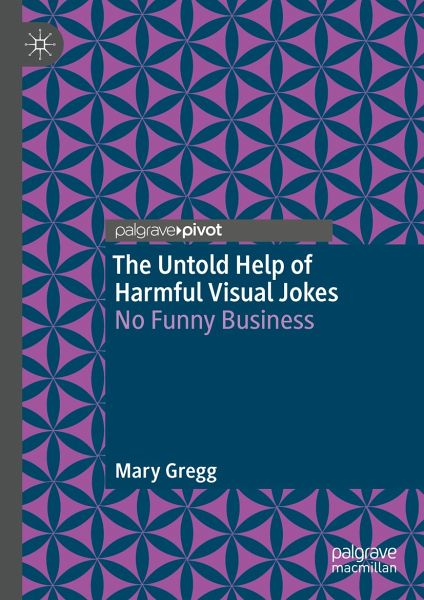
The Untold Help of Harmful Visual Jokes (eBook, PDF)
No Funny Business
Versandkostenfrei!
Sofort per Download lieferbar
36,95 €
inkl. MwSt.
Weitere Ausgaben:

PAYBACK Punkte
18 °P sammeln!
This book argues that when visual jokes are harmful, they harm in a specific way: a subject's personhood is revoked in a way that differs both in kind and degree depending on whether that person is depicted or described. Such revocation can occur in every role and any stage within the joke's context, from character to audience member, from moment of depiction to uncritical exposure. Unlike a mere unhumorous insult, which doesn't require the sympathy of its audience but can operate solely between the target and the bully, a joke requires a particular kind of response from its audience to comple...
This book argues that when visual jokes are harmful, they harm in a specific way: a subject's personhood is revoked in a way that differs both in kind and degree depending on whether that person is depicted or described. Such revocation can occur in every role and any stage within the joke's context, from character to audience member, from moment of depiction to uncritical exposure. Unlike a mere unhumorous insult, which doesn't require the sympathy of its audience but can operate solely between the target and the bully, a joke requires a particular kind of response from its audience to complete itself-to "deliver", which requires not only some degree of complicity from audience members, but a complicity earned at the expense of the joke's referent. This book shows how we need not prevent the occurrence of these things in order to undermine their oppressive power-we only need the right kind of recontextualization: turning those utterances into jokes or turning those jokes against themselves. Unlike other forms of visual oppression, the harms contained within visual jokes can be reconfigured to affirm those they were created to harm, changing their function from jokes which attack others to jokes which attack themselves, empowering those they were created to target by calling into question the problematic conceptions of audiences who are sympathetic to the harmful joke's initial formulation.
Dieser Download kann aus rechtlichen Gründen nur mit Rechnungsadresse in A, B, BG, CY, CZ, D, DK, EW, E, FIN, F, GR, HR, H, IRL, I, LT, L, LR, M, NL, PL, P, R, S, SLO, SK ausgeliefert werden.












